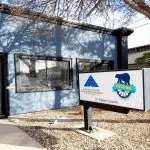
In Iqaluit, Trudeau to apologize for federal mistreatment of TB-infected Inuit
OTTAWA — The federal government is planning to open up a database of more than 9,000 files to allow Inuit families to learn about relatives lost during the tuberculosis outbreaks of the mid-20th century.
Prime Minister Justin Trudeau, who is travelling this week to Iqaluit, is expected to outline how the database will work Thursday as he delivers an apology on behalf of the government for the mistreatment of Inuit during the epidemics.
The database will, for the first time, help Inuit families in northern Canada contact representatives within their land claim organizations who can help conduct an in-depth to determine what happened to their relatives.



